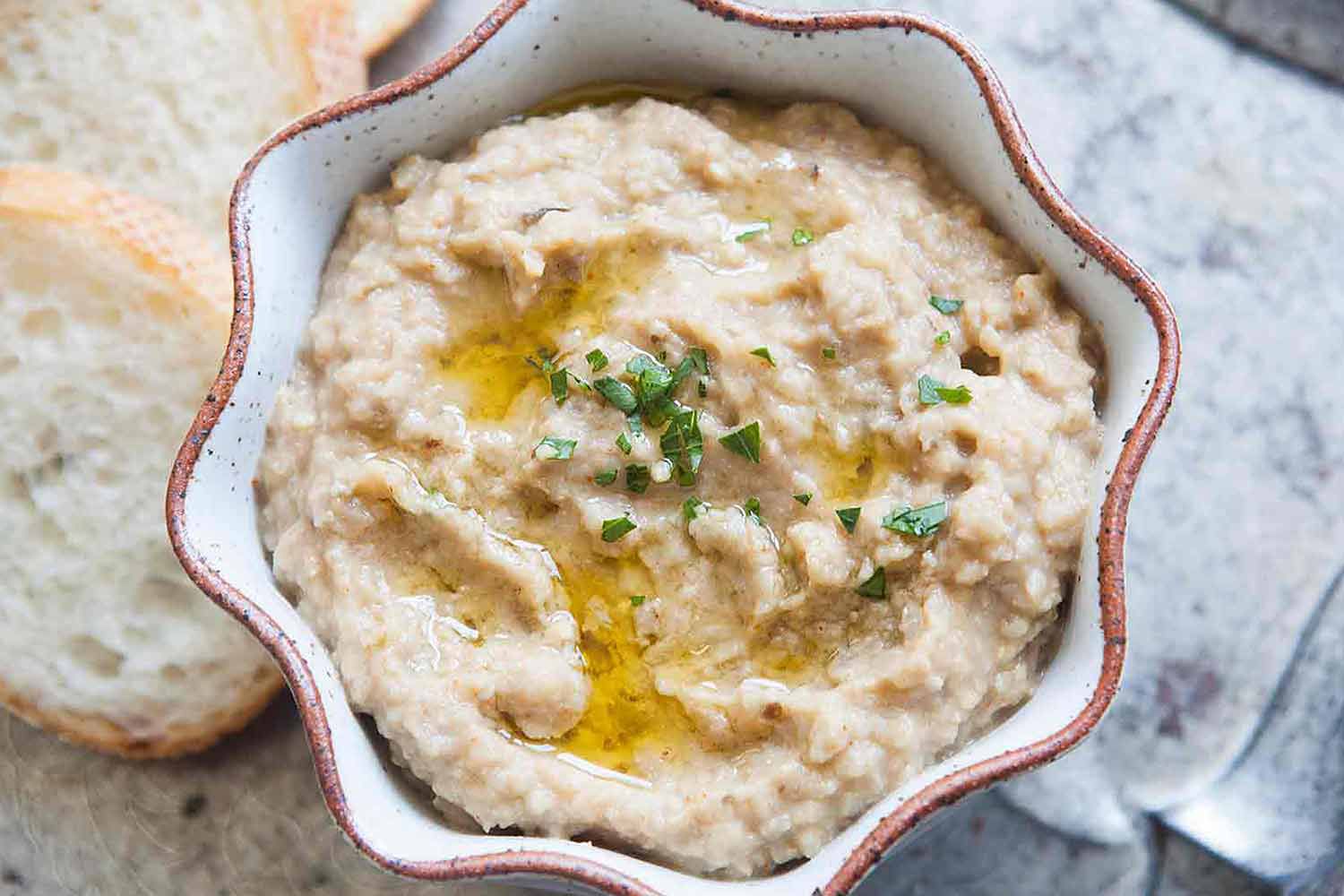
37 interesting facts about Baba ganoush
- 👁️ 297
Baba ganoush, a delightful and smoky flavored Middle Eastern dip, has captured the hearts of culinary enthusiasts around the globe. Originating from the rich and diverse culinary traditions of the Levant, this dish primarily consists of roasted eggplant blended with various seasonings and ingredients. Its creamy texture and unique taste make it a favorite appetizer, served with warm pita bread or fresh vegetables. Baba ganoush is not only celebrated for its flavor but also for its nutritional benefits, making it a wholesome choice for those seeking a healthy yet delicious eating option. Let’s explore some interesting and informative facts about Baba ganoush that highlight its culinary significance, variations, and cultural importance.
- Baba ganoush is traditionally made by roasting or grilling eggplants until their skin is charred and the inside is soft.
- The name “Baba ganoush” can be translated to “pampered papa” or “coy daddy,” reflecting its cherished status in Middle Eastern cuisine.
- Tahini, a paste made from ground sesame seeds, is a key ingredient in Baba ganoush, adding a creamy texture and nutty flavor.
- Unlike its close relative hummus, Baba ganoush is made with eggplant instead of chickpeas.
- The dish is seasoned with garlic, lemon juice, and various Middle Eastern spices, such as cumin and coriander.
- Olive oil is drizzled on top of Baba ganoush before serving, enhancing its flavor and presentation.
- Baba ganoush is often garnished with pomegranate seeds, parsley, or mint, adding a fresh and colorful contrast.
- The eggplants are traditionally roasted over an open flame or charcoal, which imparts a distinct smoky flavor to the dip.
- It is commonly served as part of a mezze platter, alongside other dishes such as hummus, tabbouleh, and stuffed grape leaves.
- Baba ganoush is a rich source of dietary fiber, vitamins B1 and B6, and antioxidants.
- The origins of Baba ganoush can be traced back to the Levantine region, which includes modern-day Lebanon, Syria, Jordan, and Palestine.
- Some variations of Baba ganoush may include yogurt, adding a tangy flavor and creamy consistency.
- The dish is typically served cold or at room temperature, making it a refreshing appetizer or snack.
- In Egypt, a similar dish called “Salat H’raimeh” is made without tahini.
- Baba ganoush is naturally gluten-free, dairy-free, and vegan, accommodating various dietary preferences and restrictions.
- The eggplants used in Baba ganoush are a good source of potassium, which is essential for heart health.
- In some regions, a pinch of smoked paprika is added to Baba ganoush for an extra smoky flavor.
- The dish can be stored in the refrigerator for up to five days, allowing the flavors to meld and intensify.
- Baba ganoush can be spread on sandwiches or wraps as a flavorful condiment.
- Some chefs add roasted bell peppers to the dish for a sweet and smoky variation.
- Baba ganoush’s popularity has spread globally, with variations found in Greek, Turkish, and Armenian cuisines.
- The consistency of Baba ganoush can vary from chunky to smooth, depending on personal preference.
- In traditional recipes, the eggplant’s flesh is scooped out and mashed by hand for a rustic texture.
- Lemon juice not only adds flavor but also prevents the dip from turning brown.
- Garlic is often roasted along with the eggplant to soften its pungency and enhance the overall flavor of the dish.
- The use of tahini in Baba ganoush differentiates it from similar eggplant dishes in other cuisines that may use mayonnaise or other binders.
- Baba ganoush can also be flavored with za’atar, a Middle Eastern spice blend, for added depth.
- Eggplants are 92% water, making Baba ganoush a hydrating food choice.
- The dish pairs well with crisp vegetables like carrots and cucumbers for dipping.
- Baba ganoush is considered a healthy alternative to mayonnaise or other creamy dips.
- The dish’s versatility allows it to be served as a dip, spread, or side dish.
- In some recipes, a small amount of sugar is added to balance the eggplant’s natural bitterness.
- Baba ganoush’s smoky flavor is best achieved by charring the eggplant skin thoroughly.
- Some cooks prefer to peel the roasted eggplant while it’s still warm for easier removal of the skin.
- Nutritional yeast or sumac can be sprinkled on top for a cheesy or tangy finish.
- The preparation of Baba ganoush often involves allowing the roasted eggplant to drain any excess liquid to achieve the perfect consistency.
- The inclusion of Baba ganoush in a meal can contribute to the intake of essential nutrients, such as magnesium and manganese.
Baba ganoush is much more than just a dip; it’s a culinary delight that showcases the rich flavors and healthy eating options of Middle Eastern cuisine. Its smoky taste, combined with the creamy texture and health benefits, makes it a favorite among food lovers worldwide. Whether enjoyed as a snack, appetizer, or part of a larger feast, Baba ganoush offers a unique taste experience that connects people to the culinary traditions of the Levant. As we continue to explore and appreciate diverse cuisines, dishes like Baba ganoush remind us of the shared joy and connection food can bring into our lives.
Baba ganoush, a delightful and smoky flavored Middle Eastern dip, has captured the hearts of culinary enthusiasts around the globe. Originating from the rich and diverse culinary traditions of the Levant, this dish primarily consists of roasted eggplant blended with various seasonings and ingredients. Its creamy texture and unique taste…